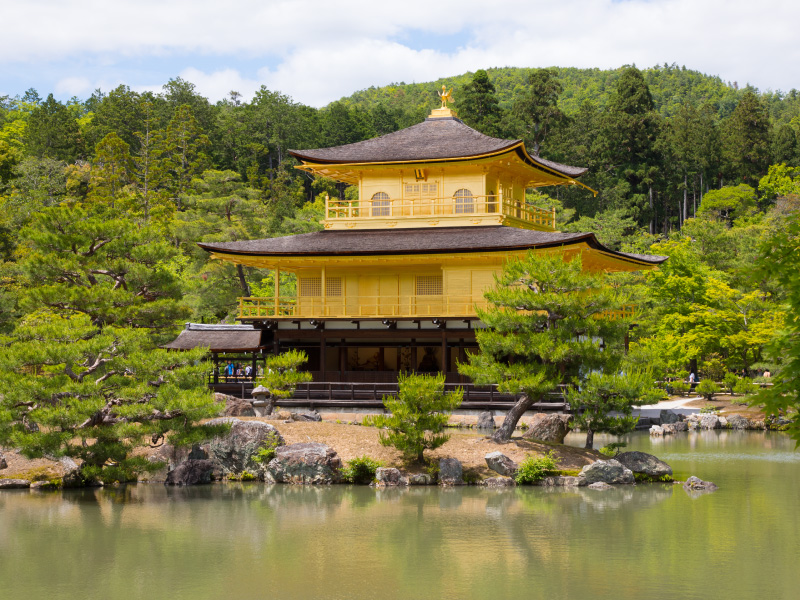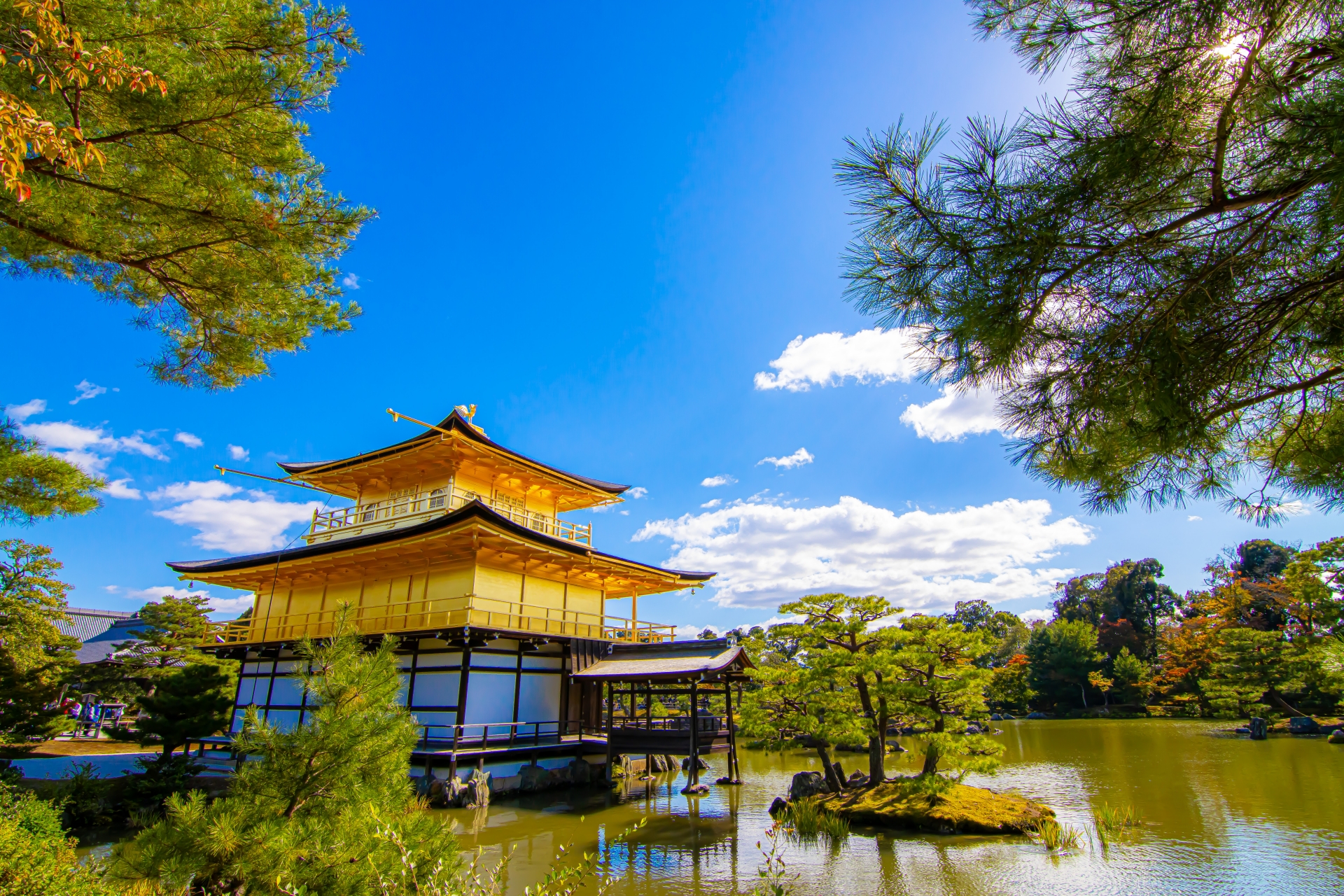When you think of Kyoto, the first image that often comes to mind is the golden pavilion shimmering on a tranquil pond – this is Kinkaku-ji Temple, a must-visit spot for foreign travelers.
Unveiling the Beauty of Kinkaku-ji Temple
Kinkaku-ji, also known as the Golden Pavilion, is one of the most stunning sights in Kyoto, attracting millions of international visitors each year. Its history, architecture, and surrounding scenery blend into a perfect illustration of Japan’s ancient cultural heritage.

The History of Kinkaku-ji
Stepping into Kinkaku-ji is like journeying back in time. Established in the 14th century by the shogun Ashikaga Yoshimitsu, it was later converted into a Zen temple after his death, as per his will. The temple has witnessed numerous historical events, including a notorious arson in 1950 by a novice monk. The current structure, a faithful reconstruction from 1955, continues to mesmerize visitors with its timeless beauty.
Architectural Highlights
Each floor of Kinkaku-ji exhibits a different architectural style, reflecting the diversity of Japanese design. The top two stories are coated with pure gold leaf, a sight to behold as they glimmer in the sunlight. Moreover, the temple’s reflection on the Mirror Pond adds to its aesthetic appeal, creating a postcard-perfect view at any time of year.
Exploring the Kinkaku-ji Grounds
Beyond the temple itself, the Kinkaku-ji complex is a joy to explore. The sprawling grounds boast meticulously maintained gardens, statues, and a teahouse, offering visitors a chance to experience the tranquility of traditional Japanese culture.
The Golden Pavilion’s Gardens
Designed in the style of the Muromachi period, the garden around Kinkaku-ji is a masterpiece in its own right. The Mirror Pond, studded with islands and stones, embodies the concept of borrowed scenery by incorporating the background hills into its views.
Secchu-tei Tea House
Adding to the serene ambiance is the Secchu-tei Tea House. Here, you can participate in a traditional tea ceremony, a unique cultural experience often pursued by foreign visitors.
Visitor’s Information: Kinkaku-ji
Location and Access
Kinkaku-ji is located in the northern part of Kyoto. The temple can be reached by direct bus services from Kyoto Station and downtown Kyoto. For those preferring rail transport, the nearest train station is Kitaoji, from which you can take a bus to the temple.
Opening Hours and Admission
Kinkaku-ji is open to visitors from 9 am to 5 pm daily. The admission fee is 400 yen for adults, and 300 yen for children. Admission includes access to the temple grounds and gardens.
A Seasonal Spectacle: Kinkaku-ji throughout the Year
Kinkaku-ji is captivating in every season. The Golden Pavilion set against the fresh greenery of spring or the vibrant red and orange leaves of autumn creates stunning scenes, making it a photographer’s paradise. During winter, a dusting of snow on the golden structure adds a tranquil and ethereal charm to the temple.
Extra Tips for Visiting Kinkaku-ji
Best Time to Visit
Early morning and late afternoon are less crowded, offering a more relaxed experience. Also, consider the weather when planning your visit. The Golden Pavilion is particularly stunning on sunny days when it glimmers in the sunlight.
Souvenirs and Local Cuisine
There are several souvenir shops near the temple where you can find a variety of traditional Japanese items. Local cuisine, such as matcha tea and yuba (tofu skin), is also worth trying.
Conclusion
Kinkaku-ji Temple, with its resplendent beauty and serene atmosphere, is undeniably a highlight of any Kyoto trip. This comprehensive guide aims to enhance the experience of foreign travelers, helping them to appreciate the rich culture and history encapsulated in this magnificent structure.



comment